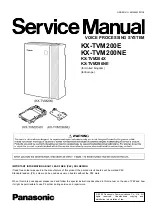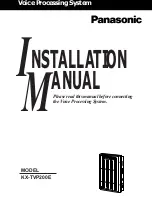
Introduction
Installation and Programming Manual
1-3
•
Programming
The system administrator can program the VoxBox by:
−
Touch-tone telephone using DTMF tones
−
Computer using the Voice Mail Utility Program (VUP). The installer
should save the files containing the parameters set in each installation.
Note: The VoxBox Lite uses the VUJ, a software utility identical to the VUP,
however specifically adjusted to the VoxBox Lite’s configuration.
•
Integration with your PBX
The system administrator can integrate the VoxBox with the PBX through:
−
In-Band DTMF Protocol integration using DTMF strings. This type of
integration is achieved by setting up the communication parameters on the
PBX and the VoxBox, including answering a call, transfer, recall from
busy, recall from no answer, the notification parameters and more.
−
Out-band integration through a serial port (RS-232) applying the PBX
parameters to the VoxBox. This type of integration must be developed
separately for each type of PBX.
•
Loop Current Disconnection
Some PBXs have the capability, which enables them to notify the VoxBox
through the line interface when a call is terminated. When this situation is
detected by the Voice mail, the line is disconnected and the VoxBox is then
ready to receive another call.
•
Message Notification
The VoxBox automatically notifies the mailbox owner of new messages in
different ways according to the system configuration. Notification may be local
(to a PBX extension) or remote (to a telephone at a remote location, a cellular
telephone or a pager).
•
Security Passwords
The VoxBox supports three types of passwords, each with four digits:
−
System Administrator
. Gives access to all data stored in the VoxBox.
−
Operator
. Gives access to the operating modes of the system. The available
operating modes are: Day, Night, Holiday and Break.
−
Mailbox
. Gives access to individual mailboxes. Mailbox owners can
change the password at any time.



























